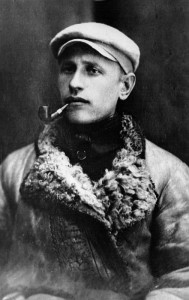Our website is made possible by displaying online advertisements to our visitors.
Please consider supporting us by disabling your ad blocker.
Karlis Johansons
Karlis Johansons | |
|---|---|
Kārlis Johansons | |
 Johansons, c. 1922 | |
| Born | 16 January 1890 |
| Died | 18 October 1929 (aged 39) |
| Nationality | Latvian |
| Education | Riga Municipal Art School, Latvia; Penza School of Arts, Russia |
| Known for | Latvian-Soviet avant-garde Constructivism art, proto-tensegrity, architecture |
| Notable work | Self-tensile constructions |
| Movement | Constructivism, Bauhaus, Abstract, Surrealism |
Karlis Johansson (16 January 1890 – 18 October 1929) was a Latvian-Soviet avant-garde artist.
In 1914 he joined the "Green Flower" (in Latvian: "Zaļā puķe", in Russian: "Зелёный цветок") association of avant-garde artists (besides Johansons, there were also Aleksandrs Drēviņš, Voldemārs Tone (lv) and Konrāds Ubāns. Through the era of the Russian Revolution he lived in Moscow where he was involved in the Russian constructivist movement. In 1921, "self-tensile constructions" were exhibited, which became globally known as "tensegrity" in the 1950s as the topical concept was popularized by Richard Buckminster Fuller and sculptor Kenneth Snelson's work.[1]
- ^ Translated into English from the Latvian Wikipedia article on Kārlis Johansons.
Previous Page Next Page


